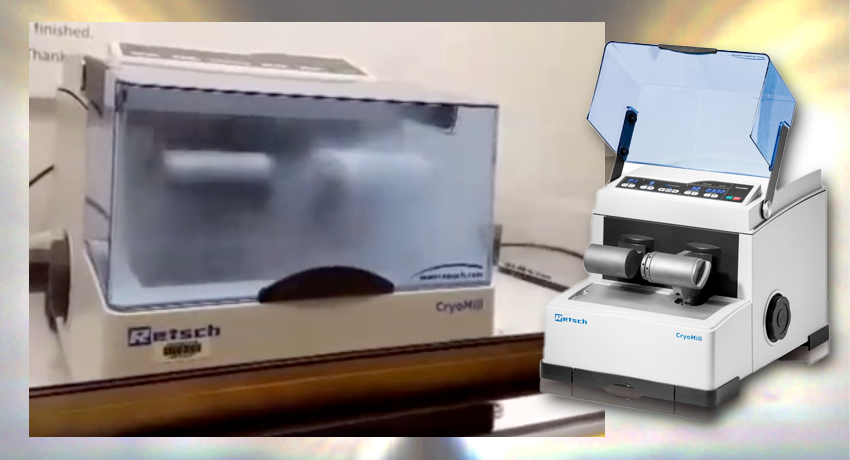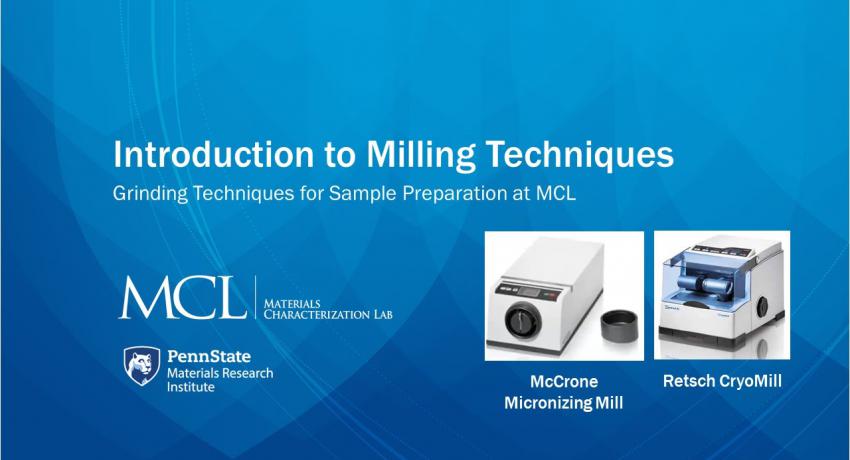The CryoMill is tailored for cryogenic grinding. The grinding jar is continually cooled with liquid nitrogen from the integrated cooling system before and during the grinding process. Visit retsch.com
The ball-milling tables can operate multiple jars at the same time as the jars’ rotation is induced by continuous rotation of the table’s rollers. Ball mill is typically used to grind and/or blend materials and it can be done wet or dry. It can be used to mix ceramic powders, disperse particles in solvents, homogenize ceramic slurries, etc. Ball mills operate by rotating plastic jars around a horizontal axis, partially filled with the material to be ground plus the grinding medium. The grinding media can be spherical or cylindrical, commercially available in a range of sizes, 3 to 30mm, and materials, such as stainless-steel or ceramics. The media media most used in all milling applications are made of zirconia. But if the purpose of ball-milling is to blend materials softer than zirconia, alumina media is recommended to avoid breaking the dispersed powder. Using grinding balls with different diameters, 3 or more, improves the particles dispersion in the ceramic slurries.
The Sweco mill operates with five (5) 1L jars, and it comes with an adapter to allow a 0.5L jar to be secured in one of the 5 positions. The working principle of the vibratory grinding mill is based on intense motion of the grinding balls, with both inertia and centrifugal forces. The energy produced using the Sweco mill is higher than that produced by the ball mill, making it more effective in reducing the particles size to 0.5 micron or less. Cylindrical zirconia or stainless-steel grinding media should be used for effective grinding of the powder.
The attritor mill is a wet grinding attrition mill. It differs from conventional ball mills as it uses much smaller media with diameter less than 5mm, leading to greater media-material contact area. Additionally, the attritor mill works at a higher rotation speed up to SPEED. The power input in the attritor is used directly for agitating the media to achieve grinding, it is not used for rotating or vibrating a jar containing the materials and the media. Both impact and shearing force contribute to efficiently grind the powder and produce sub-micron particles with a narrow size distribution.
XRD and LTCC also have milling capabilities. Please visit the XRD / SAXS-WAXS webpage.
Features
-
Ideal grinding method for tough, elastic, heat sensitive samples and samples with volatile content
-
Grinds at liquid nitrogen temperatures (-196 °C)
-
Safe due to autofill system for liquid nitrogen
-
Cryogenic grinding improves the breaking behavior
-
Can be operated without cooling if needed
-
Suitable for dry and wet grinding
Specifications
-
Feed size: <8 mm
-
Final fineness: d90 < 5 μm
-
Sample volume : < 20 ml. Note: Fill to 1/3 volume, in general 10-20 ml, depending on the jar volume
-
Digital pre-selection of vibrational frequency : 5-30 Hz (300-1,800 min-1
-
Digital pre-selection of grinding time: 30 s – 90 min
Grinding jar and media selections
Available grinding jar types:
-
50 ml chromium stainless steel with 25 mm grinding ball. Used with majority of the samples .
-
25 ml ZrO2 and 25 ml PTFE with 15 mm grinding ball. Used if Cr contamination is a concern or powders are already 100-500 μm
| Ball Milling Tables | McCrone Micronizing XRD Mill | Retsch CryoMill | Sweco Vibro-Energy | Union Process Attritor Mill | |
|---|---|---|---|---|---|
| Manufacturer Website |
McCrone.com | Retsch.com | Sweco.com | UnionProcess.com | |
| Typical Samples | Ceramic powder, organic additives | Medium-hard, hard, brittle, fibrous | Tough, elastic, heat sensitive or volatile | Ceramic powder | Ceramic powder |
| Temperature | ambient | ambient | ambient or -196° C | ambient | ambient |
| Volume | <1 L | < 20 mL | < 20 mL | < 1 L | 250 mL |
| Wet / Dry | both | both | both | wet | wet |
| Acceptable Solvents | H2O, isoproply alcohol, ethanol | H2O, isoproply alcohol | deionized water, Isopropyl alcohol, mineral spirits | H2O, isoproply alcholol, ethanol | H2O, isoproply alcholol, ethanol |
| Jars | High density polyethylene | Agate, alumina, zirconia | 50 mL Cr Stainless, 25 mL zirconia, 25 mL PTFE | High density polyethylene | Attritor's tank |
| Media | zirconia, alumina, stainless steel | 48 cylindrical elements - Agate, alumina, zirconia | 15 and 25 mm steel, 15 mm zirconia, 15 mm PTFE | H2O, isoproply alcohol, ethanol | H2O, isoproply alcohol, ethanol |
| Maximum Feed Size | < 0.5 mm | < 0.5 mm | < 8 mm | < 0.5 mm | < 10 mm |
| Minimum Final Size | < 1 µm | < 5 µm | < 1 µm | < 1 µm | |
| Grinding Time | hrs or days | 1-35 min. | 30 s - 90 min. | up to 48hrs | hrs (do not leave overnight) |






